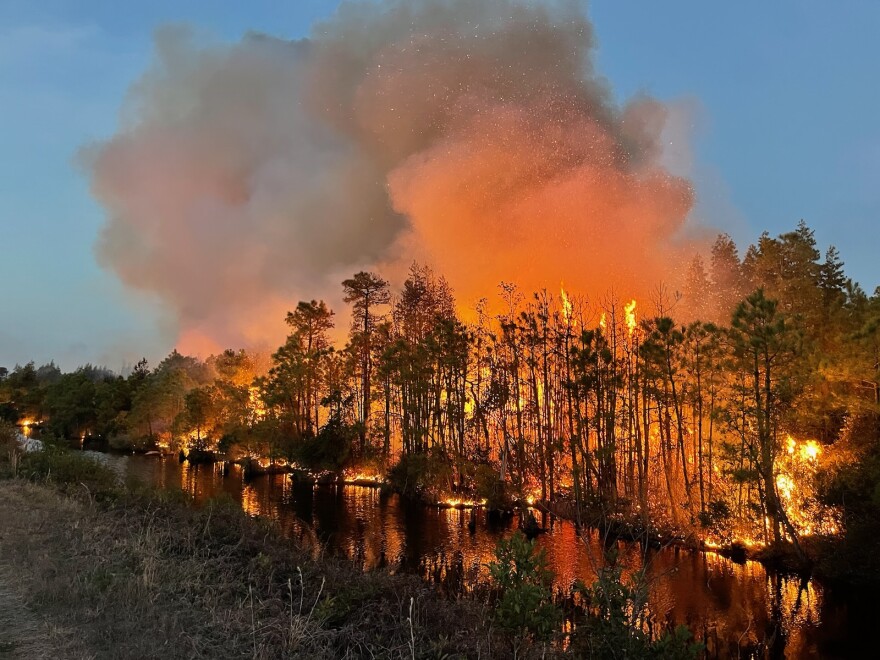As October begins, so does wildfire season, and the North Carolina Forest Service is urging people to be cautious.
October through early December is one of North Carolina's main wildfire seasons. While the state's summertime wildfires have been larger in recent years, in fall, they happen more frequently due to drier weather and vegetation.
Last fiscal year, there were 4,671 wildfires in the state, burning nearly 70,000 acres, according to Philip Jackson, an NC Forest Service public information officer. More than a quarter of those wildfires occurred in the fall months, with most of the state’s wildfires being caused by people.
“Of those 4,000-plus wildfires that we had last year, only 1% of those could be directly linked to a natural ignition source, such as lightning.” Jackson said. “That leaves that other 99% fallen on the shoulders of people.”
He said debris burning is the most common form of human-caused wildfires. Other causes include campfires not being fully extinguished, and even vehicle hubcaps scraping on pavement.

North Carolina’s increasing population is also a concern, as more homes are built in “wildland urban interface" (WUI) – areas where human structures meet undeveloped land, forests and vegetation.
“As the population of the state increases, the number of wildfires per year is expected to also increase," Jackson said. “Basic math: More people, more people recreating, more people causing wildfires.”
The Forest Service said roughly 2.25 million homes in the state are in WUI areas. With more people living close to wildfire fuel like trees, leaves and shrubs, wildfires can more easily harm people and their homes.
To decrease risk, Jackson recommended numerous tips, like getting a burn permit, being mindful of weather, and always having a water source nearby before burning debris. He also said people could create more fire-resistant landscapes at home by planting species that are less flammable, like dogwoods and redbuds.
Additionally, Jackson emphasized that flying drones near wildfires is dangerous and illegal, as drones have increasingly been interfering with firefighting efforts.


